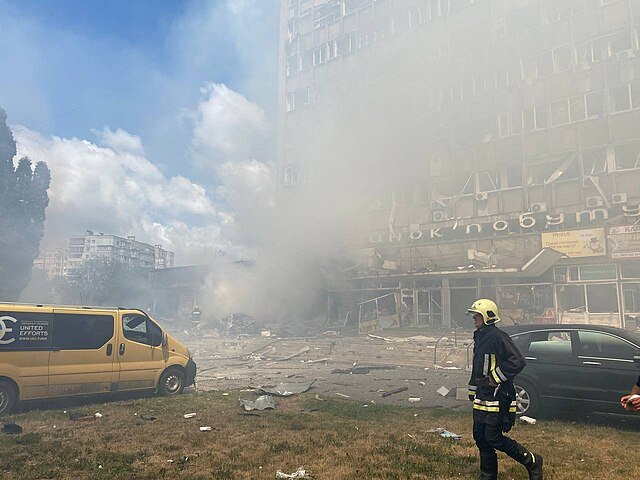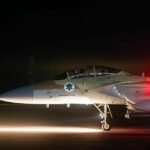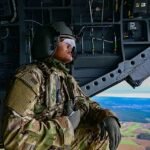In the quiet hours before dawn on June 1, 2025, Ukraine’s heart beat strong with a daring act of defiance. “Operation Spider Web,” as it was called, sent over 100 drones slicing through the night to strike five Russian air bases, leaving an estimated 41 aircraft—some of them nuclear-capable Tu-95 and Tu-22 bombers—damaged or in ruins. For the Ukrainian soldiers, engineers, and families who made this happen, it was more than a military strike—it was a cry of resilience, a testament to their unbreakable spirit in a war that has taken so much.
These drones didn’t just appear—they were carried across borders over 18 months, hidden in wooden cabins on trucks, some parked so close to Russian bases they could’ve been spotted by a passerby. When the moment came, those cabin roofs slid open, and the drones soared, hitting targets with the kind of precision that comes from months of sweat and planning. They struck airfields in Murmansk, Irkutsk, Ivanovo, Ryazan, and Amur—places as far as 4,500 kilometers from Ukraine’s border. At the Belaya base in Irkutsk, home to Russia’s prized bombers, unverified videos showed flames swallowing Tu-95s, a sight that carried the weight of Ukraine’s pain and pride.
President Volodymyr Zelensky, his voice thick with emotion, spoke to his people like a father rallying his family. “We’ve lost homes, loved ones, but we’ve shown the world we can still fight,” he said. “Those planes bombed our cities, and now we’ve reached them, no matter how far.” The Security Service of Ukraine (SBU), the masterminds behind the operation, said the strike cost Russia $7 billion, with about a third of its strategic bombers hit. SBU chief Vasyl Malyuk, speaking like someone who’d carried the war’s burden for years, said, “These are the planes that bring death to our people. We struck them because we had to—for our survival.”
This wasn’t a spur-of-the-moment plan. Back in early 2023, Ukrainian engineers, soldiers, and everyday people with a fire in their hearts started piecing it together. They built AI-powered drones that could dodge Russian defenses, flying without GPS like birds finding their way home. A “mother drone” system, crafted by Ukraine’s scrappy tech community, guided the smaller ones to their targets. The logistics were staggering—drones tucked into disguised containers, some hidden near Russia’s own security offices, a bold move that speaks to Ukraine’s courage. Russia admitted to the attacks but downplayed them, saying most were stopped, though they couldn’t deny the fires that broke out in Murmansk and Irkutsk.
The world watched, some in awe, others with worry. A military analyst, voice full of admiration, said, “Ukraine’s shown what a determined nation can do—outsmarting a giant with heart and ingenuity.” Russian officials, angry and defensive, called it a reckless move, hinting at payback but keeping their plans vague. The strike came right before peace talks in Istanbul on June 2, making people wonder if Ukraine was sending a message: we’re strong, and we’re not backing down. At the talks, both sides swapped ideas and spoke of freeing prisoners, a small flicker of hope in a dark time.
The strike’s ripples are deep. Russia’s bombers, tools of both war and fear, are now weakened, which might mean fewer attacks on Ukrainian towns. For Ukraine’s people, it’s a moment to stand tall, a reminder that they can still fight back after years of grief. But it’s not a simple win—mothers, fathers, and children who’ve lost everything to Russian airstrikes know the cost of war, and they fear what Russia might do next.
As the world holds its breath, questions linger like shadows. What will Russia do now? Can the Istanbul talks bring even a sliver of peace? There’s talk of Russian insiders helping Ukraine, maybe even a former Ukrainian DJ and his wife, now under Moscow’s glare, adding a twist to this story. For now, Ukraine’s people cling to this moment of strength, their hearts full of hope and fear, as they face an uncertain road ahead, praying for a day when war no longer defines their lives.




















